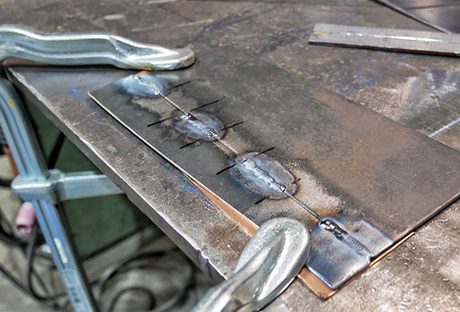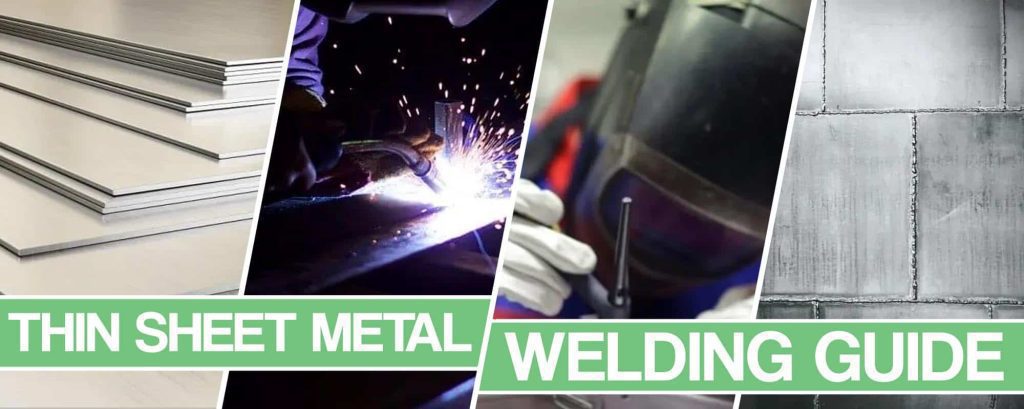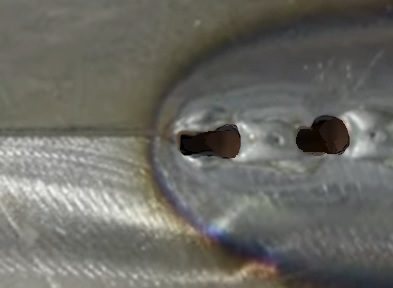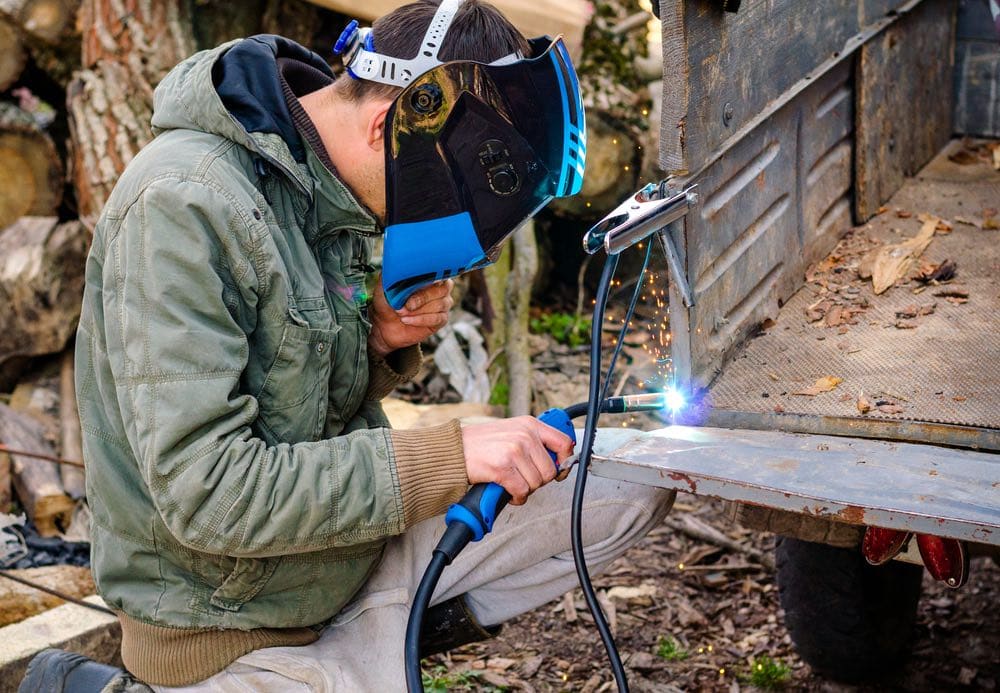Are you working with thin materials and looking for some helpful tips on welding? Whether you’re a beginner or an experienced welder, it’s essential to have a few tricks up your sleeve when working with thin metals. In this article, we will explore some expert advice to ensure seamless and successful welding on thin materials. From choosing the right electrode to adjusting your welding technique, these tips will help you achieve strong and durable welds every time. So let’s dive in and discover how to master the art of welding thin materials!
Choosing the Right Welding Process
When it comes to welding thin materials, it is crucial to choose the right welding process. Two common welding processes that are suitable for thin materials are TIG welding and MIG welding.
Consider TIG Welding for Precise Control
TIG welding, also known as Gas Tungsten Arc Welding (GTAW), is an excellent option for welding thin materials due to its precise control. TIG welding works by creating an arc between a non-consumable tungsten electrode and the base metal, with a filler rod added if necessary. This process allows for precise control over the heat input, making it suitable for thin materials. By adjusting the amperage and using a thin diameter electrode, you can achieve accurate and clean welds on thin materials.
Use MIG Welding for Faster and Efficient Welds
MIG welding, also known as Gas Metal Arc Welding (GMAW), is another option when it comes to welding thin materials. MIG welding uses a consumable electrode wire that is fed continuously through a welding gun. This process is known for its speed and efficiency, making it suitable for thin materials where a quick weld is desired. However, it is important to note that MIG welding may require more practice to achieve the same level of precision as TIG welding.
Prepping the Material
Properly prepping the material is essential for achieving high-quality welds on thin materials. Here are some steps you should follow:
Clean the Surface Thoroughly
Before starting the welding process, it is crucial to clean the surface of the material thoroughly. Any dirt, grease, or contaminants on the surface can affect the quality of the weld. Use a degreaser or cleaner specifically designed for welding to ensure a clean surface.
Remove Any Coating or Rust
If your thin material has any coating or rust, it is important to remove it before welding. Coatings and rust can disrupt the welding process and lead to weak welds. Use a wire brush or sandpaper to remove any coating or rust, ensuring a clean surface for welding.
Selecting the Correct Electrodes or Filler Rods
Choosing the right electrodes or filler rods is crucial for welding thin materials. Here are some considerations:
Choose Thinner Diameter Electrodes for Better Control
When welding thin materials, it is recommended to use thinner diameter electrodes. Thinner electrodes provide better control over the weld puddle and minimize the risk of burning through the material. Opt for electrodes with diameters between 1/16 inch and 3/32 inch for welding thin materials.
Use Filler Rods with Similar Composition to Base Metal
If you need to use filler rods during the welding process, it is important to choose filler rods with a similar composition to the base metal. This helps ensure compatibility and reduces the risk of inconsistent or weak welds. Consult the material specifications or seek advice from a welding professional to determine the appropriate filler rod composition for your specific application.
Setting Up the Welding Machine
Properly setting up the welding machine is crucial for achieving successful welds on thin materials. Pay attention to the following:
Adjust the Amperage and Wire Speed
When welding thin materials, it is important to adjust the amperage and wire speed on your welding machine accordingly. Generally, lower amperage and wire speed settings should be used for thin materials to prevent overheating and burning through. Consult the welding machine’s manual or seek advice from a welding professional to determine the appropriate settings for welding thin materials.
Using Proper Welding Techniques
Employing proper welding techniques is essential to ensure clean and strong welds on thin materials. Here are some techniques to consider:
Maintain Fast Travel Speeds to Minimize Heat Input
When welding thin materials, it is important to maintain fast travel speeds. This helps minimize the heat input into the material, reducing the risk of warping or distortion. Practice maintaining a steady and consistent travel speed to achieve high-quality welds on thin materials.
Use Tack Welds to Prevent Warping
To minimize the risk of warping on thin materials, it is recommended to use tack welds. Tack welds are small welds that hold the pieces of material together before completing the final weld. By strategically placing tack welds along the joint, you can distribute the heat and minimize the risk of warping or distortion.
Avoiding Excessive Heat
Excessive heat can be detrimental when welding thin materials. Here are some tips to help avoid excessive heat:
Reduce Material Distortion by Controlling Heat Input
To reduce material distortion when welding thin materials, it is crucial to control the heat input. Avoid excessive heat that can cause the material to warp or buckle. By adjusting the welding machine settings, maintaining a fast travel speed, and using proper welding techniques, you can minimize the heat input and achieve a high-quality weld on thin materials.
Use Pulse or Low Heat Settings
Some welding machines offer pulse or low heat settings, which can be beneficial when welding thin materials. These settings allow for better heat control and reduce the risk of overheating or burning through the material. If your welding machine has these options, consider using them when welding thin materials.
Using Backing or Clamping Methods
To ensure the stability and alignment of thin materials during the welding process, consider using backing or clamping methods. Here’s what you should do:
Ensure Proper Alignment and Stability of Thin Materials
When welding thin materials, it is important to ensure proper alignment and stability. Thin materials can be susceptible to movement or distortion during the welding process, which can result in poor weld quality. Using backing or clamping methods can help keep the material in place, ensuring proper alignment and stability throughout the welding process.
Choosing the Right Welding Position
Selecting the appropriate welding position can greatly affect the quality of your welds on thin materials. Consider the following:
Position the Weld Joint Vertically or Horizontally for Better Control
When welding thin materials, it is generally recommended to position the weld joint vertically or horizontally. These positions provide better control over the weld puddle, reducing the risk of overheating or burning through the material. Consider the thickness and shape of the thin material to determine the best welding position for optimal results.
Employing Gas Coverage
Proper gas coverage is crucial when welding thin materials. Consider the following:
Use Argon Gas for TIG Welding for Better Shielding and Clean Welds
When TIG welding thin materials, it is recommended to use argon gas for better shielding and clean welds. Argon gas creates an inert atmosphere, protecting the weld puddle from contaminants and oxidation. This helps maintain the integrity and quality of the weld on thin materials. Consult the welding machine’s manual or seek advice from a welding professional to determine the appropriate gas flow rate and settings for your specific application.
Post-Welding Considerations
After completing the welding process on thin materials, there are certain considerations to keep in mind. Here’s what you should do:
Inspect and Clean the Weld Seam
Inspecting and cleaning the weld seam is essential to ensure its quality. After welding thin materials, visually inspect the weld seam for any defects, such as cracks or porosity. If any defects are detected, take appropriate measures to address them before proceeding. Additionally, clean the weld seam to remove any slag or spatter, ensuring a clean and visually appealing finish.
Perform Post-Weld Heat Treatment if Necessary
In some cases, post-weld heat treatment may be necessary for thin materials. Post-weld heat treatment involves subjecting the welded material to controlled heating and cooling processes to relieve stress and improve the material’s mechanical properties. Consult the material specifications or seek advice from a welding professional to determine if post-weld heat treatment is required for your specific application.
By following these tips and techniques, you can achieve successful welds on thin materials. Remember to choose the right welding process, prep the material properly, select the correct electrodes or filler rods, set up the welding machine appropriately, employ proper welding techniques, avoid excessive heat, use backing or clamping methods as needed, choose the right welding position, ensure proper gas coverage, and consider post-welding considerations. With practice and attention to detail, you’ll be able to weld thin materials with precision and confidence. Happy welding!










































